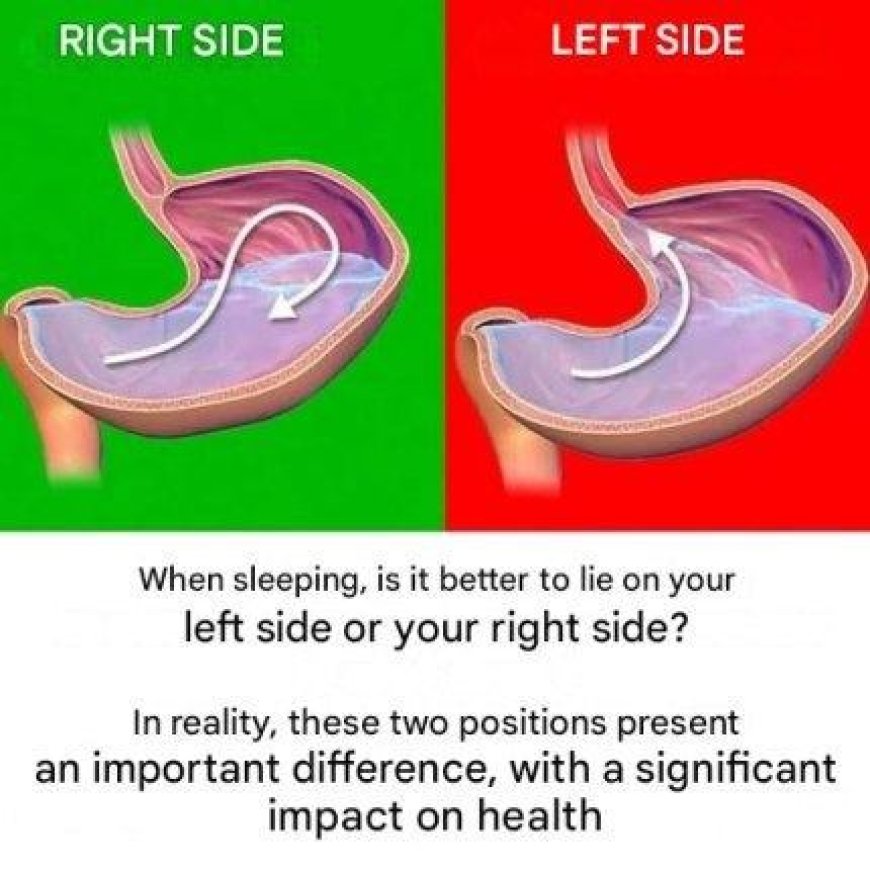Which side is better to sleep on?
Introduction (English): Finding the perfect sleeping position can sometimes feel like an endless struggle — you roll from your back to your stomach, curl up, stretch out, and still wake up tired or sore. But what if the key to better rest and improved health was simply choosing the right side to sleep on? While it may seem like a small detail, your sleeping position can have a big impact on your body — influencing your digestion, breathing, spinal alignment, and even how refreshed you feel in the morning.

3.
We all know the struggle — lying in bed, flipping from one side to the other, chasing that perfect position that finally brings deep, restful sleep. But what if the secret to better sleep and a healthier body had less to do with your mattress or pillow, and more with the side you choose to lie on? Sleep experts say that your sleeping position doesn’t just affect your comfort; it can influence everything from your
digestion and breathing to your heart and spine. In fact, one particular side may hold surprising health benefits that most people overlook. Before you settle into your usual position tonight, it might be worth discovering which side truly helps your body rest, recover, and heal while you sleep.
Which side is better to sleep on?
Every night, it’s the same thing: you toss and turn, hoping to find the perfect position to finally drift off to sleep. On your back, on your stomach, curled up… nothing works. What if the solution was actually much simpler than it seems? One position, in particular, could not only be the most comfortable, but also the most beneficial for your health. Curious? You’ll see that choosing the right side could make all the difference.
Sleeping on your back or stomach: a bad idea?
It’s a common misconception that sleeping on your back helps keep your body properly aligned. However, this position puts significant pressure on your upper back and hips. As for the lower back, it often finds itself poorly supported, which can ultimately lead to chronic pain. And sleeping on your stomach? Even less recommended: this position puts a lot of strain on your back and lower back, while compressing your internal organs. In short, it’s a bit like trying to rest on a wobbly chair… the balance is unstable, and comfort is almost nonexistent.
Why is the left side considered the best?
An ally for your spine and your breathing
Sleeping on your left side allows your spine to stay naturally aligned. The result: less tension, better hip and back support, and a more peaceful awakening. But that’s not all. This position also promotes better breathing. According to health experts, it optimizes airflow to the lungs, which can be a real relief for people prone to snoring or sleep apnea.
A boost for your digestion
Have you ever felt that famous “slump” after a large meal? This feeling of heaviness often comes from slowed digestion. Or, sleeping or lying down for a few minutes on your left side after eating can greatly help. Why? Because the stomach and pancreas are located on the left: in this position, digestive juices circulate more naturally, and food progresses more quickly through the digestive system. It’s a bit like following the current of a river rather than swimming against it.
Facilitated lymphatic drainage
The often-overlooked lymphatic system plays an essential role in eliminating toxins. And surprise: the majority of this network is located… on the left side! By sleeping on this side, you facilitate the work of your heart, your blood pressure, and your lymph nodes, all located on this side. Gravity does the rest, naturally supporting drainage. It’s a bit like your body going into “spring cleaning” mode during the night.
Can you really change your sleeping position?
Changing a habit as ingrained as your sleeping position can seem difficult. And for good reason: your body has well-established reflexes. Sleep specialist Dr. Steven Park advises taking it slow. Rather than forcing a radical change, gradually experiment with sleeping on your left side. For example, you can wedge a pillow behind your back to prevent you from tossing and turning during the night. With a little patience, your body will adjust naturally.
A Little Trick That Can Change Everything
As is often the case when it comes to well-being, it’s the simplest actions that make all the difference. Sleeping on your left side requires neither physical effort nor expensive equipment. It’s a habit accessible to everyone, to be adopted gradually to observe its benefits. Better digestion, a less painful back, deeper sleep… what more could you ask for?


























